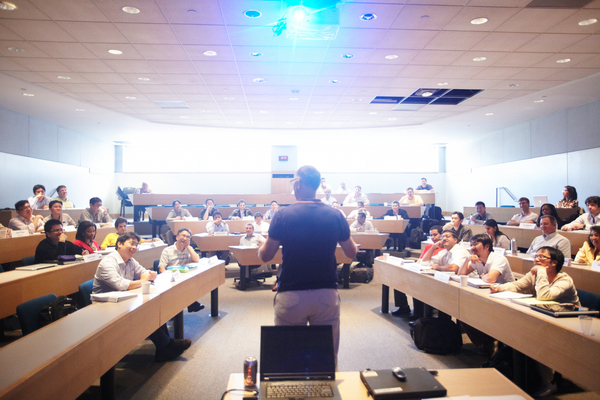‘YOU’VE HEARD OF TYPE A?’
The profile for Sloan Fellows is also fairly consistent across all three programs – experienced, talented individuals with stellar business and academic credentials. “You’ve heard of Type A personalities?” asks Stephen Sacca, the director of MIT’s program. “We affectionately refer to MIT Sloan Fellows as double As, so very highly motivated people who want to effect change.”

MIT recruits senior faculty to teach their Sloan Fellows, who are experienced business professionals
Linden Selby, the senior admissions manager for LBS’ Sloan program describes candidates as “capable, curious and open-minded.” “We don’t have any quotas or set ideas about what a Sloan Fellow will look like, but they do need to have strong experience to share with the class,” she adds.
The program originated in 1930 when Alfred P. Sloan, Jr., then CEO of General Motors, realized that the company’s engineers lacked management savvy. He contacted MIT’s Erwin H. Shell, who proposed a business education program for promising engineers. The MIT Sponsored Fellowships program was born, later to be renamed the MIT Sloan Fellows Program to honor the legendary GM leader. The Sloan program expanded to Stanford in 1957 and eventually to London in 1968.
NOW MOST FELLOWS PAY THEIR OWN WAY
Originally. all Sloan Fellows were sponsored by companies. Now, however, most Fellows pay their own way. Mike Hochleutner, the director of Stanford’s Sloan program, says the shift has translated to a more diverse group of Fellows. MIT has welcomed more entrepreneurs, who bring their own funding and “blood- sweat-and-tears” business experience, according to Sacca. Selby estimates that 10 percent of LBS’ Fellows come specifically to build enterprise skills and a further 10 percent come from enterprise backgrounds. “It’s easy to think of business students as being on the corporate track, but I just wanted to flag enterprise because this is pretty big for Sloan Fellows,” she says.
And, as you would expect, the programs now attract a wide array of people. Students from different countries or who possess unique business and life experiences tend to be very competitive applicants. “There’s not one size fits all, so we certainly try to put together a very diverse class that’s representative of different geographies, different industries, different functions, as well as different personality types, backgrounds and life experiences,” Hochleutner says. He typically sees three types of people who apply: those with strong business backgrounds aiming to accelerate their careers, those with technical expertise who are stepping into managerial roles and entrepreneurs looking to hone their management skills.
The Sloan programs all kickoff with a core curriculum to give Fellows a similar foundation. However, these classes are amped up versions of their traditional MBA counterparts and designed with senior executives in mind. For instance, LBS’ core curriculum includes Executive Leadership, Managing People and Organizations and Understanding Top Management. The Sloan programs also move at a faster pace than the average MBA degree and none require a summer internship.





Questions about this article? Email us or leave a comment below.